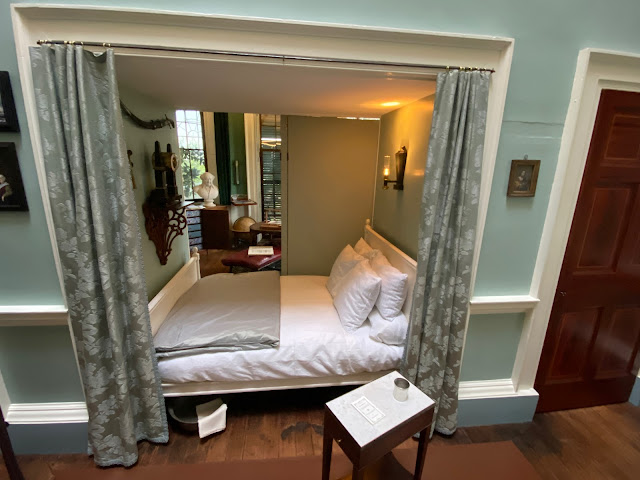We wanted to enjoy some delicious crab cakes on the shore of the Chesapeake Bay before we left it behind. We drove up to Colonial Beach to get some of the highest rated crab cakes in the area at a water front restaurant. Our first choice turned out to be closed for no apparent reason. Our second choice, Wilkerson’s, was right on the water and had a large number of locals for late lunch. The food was great! The crab cakes were sweet and packed full of lump crab with just enough binder to keep it together to cook. After a delightful lunch, we made our way just down the road to George Washington’s Birthplace National Monument. There is not much to this park being only 55 acres. This was where George Washington was born in 1726 and lived until he was 3 ½ when his family moved to what is now Mount Vernon. The house, which is located on the site of the original home, is a recreation of what someone thought a colonial plantation home would have looked like. The real house burned down in the 1800s But the land has an interesting history. When George Washington’s father passed away, this land was passed down to his half-brother (GW got Mount Vernon). When the half-brother passed away, it was passed down to George Washingtons other half-brother. When that half-brother passed away, it was passed on to George Washington (just a few months prior to his death). George Washington visited the site several times including just prior to the battle of Yorktown to visit his half-brothers. When George Washington passed away, it became his wife’s property, Martha Custis Washington. When Martha Washington passed away, it became one of her daughters, from her first marriage, who passed it down to her daughter, who married Robert E Lee! Robert E Lee deeded 25 acres, including the location of the original home, to the state of Virginia in 1859. After the civil war, it became federal property. So, it has had a pretty tortured history. The reproduction house was closed when we arrived but the reproduction kitchen was open. Although realistic reproductions for the time period, they do not believe the house and farm that George Washington was born in is anywhere near as grand. So, it was a bit of a letdown. After collecting our passport stamp, viewing the limited exhibits and watching the movie, we wandered over to the house and down to the shore. Situated at the mouth of Pope’s Creek where it flows into the Potomac, the views are beautiful out over the river with the leaves changing into their fall colors. Then it was back to the Wanderer.
 |
| Entrance Sign |
 |
| Reproduction House of a Colonial Era Plantation Home |
 |
| Reproduction of a Colonial Era Plantation Kitchen |
 |
| View out over the Pope Creek and Potomac River |





























.jpeg)





























